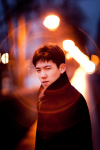| + | Program Notes |
The second piano quintet was composed in Santa Fe in 2021 for Haochen Zhang and the Dover Quartet.
My first quintet was in one extended movement, which encompassed a somewhat traditional opening, scherzo, slow movement and finale. For this second quintet, I wanted to explore a completely different scenario.
Therefore, even under the title, Piano Quintet No. 2, I added a subtitle: ‘In Six Parts.’ The form of the work is all about layering and perspective. This begins, on the most basic level, with the six parts themselves. Parts number one, four and six are the three anchors of the work. They are longer and more emotionally varied, even perhaps, more profound. They anchor the piece. As a totality, they are one, long, arching movement, which is simply separated in time by interspersing the other, shorter parts. Over the course of the piece, this long ‘movement’ undergoes a developing exploration of several episodes of varying character. The episodic nature of this music is similar to a stream of consciousness. Emotions change abruptly and towards extremes, rather than having preparatory transitions.
An aside: as regards the emotional content of music, I have long left the idea of any specific, representative reflections. I believe that the emotions in music encompass their own world. And clearly, we can relate to that world and absorb the experience.
There are several specific, and recognizable aspects of these episodes, which are found in all three parts of this arching movement. There is a prominent three chord progression, which appears in all three parts. There are longer sections developing a flowing, chromatic melody, which is simpler in the strings and more embellished in the piano filigree. There is a falling two chord motif. And there are short, two note, plaintive, cries.
One of the most complex and difficult aspects of composing any piece is creating the last movement. One always faces the urge to arrive at a summation, a culmination of the previous parts. In this case, the sixth part becomes a natural outgrowth of its organic development, from part one and part four.
Parts two and three act as both small episodes of their own, as well as crucial ‘spacers’ between part one and four. The three anchors are intense and demanding of the listener. They need time in between. Part two is really an episode in sound and atmosphere. It is a duet by the two violins alone, which is meant to sound like one violin. It is soft, mysterious, and fleeting.
Part three is in essence a chorale, played by the piano. It is, however, also a good example of the layering I referred to above. This specific layering manifests in a softer, faster music, which we hear on a different plane from the piano chorale. I think of how clouds, layered in the sky, travel at different heights and different speeds. In a further method of cohesion, the chorale stems from the three chord motif, which appears in parts one, four, and six.
Part number five serves the same purpose between the anchors four and six. It has its own sound and emotion, but also serves to separate and add space. This part is a jazzy, improvisatory, semi-unison sprint. In addition to its other functions, it also provides substantial propulsion. The accumulated energy allows for the weight of the sixth part that follows it. In some ways it feels like a finale itself and makes part six feel like a long coda, adding to its sense of culmination or epilogue.
Part six begins all pizzicato in the strings. This material is derived from the fast, secondary string parts of the movement three chorale. It then progresses through episodes of the further developed themes from parts one and four, including the chromatic melody and the three chord theme. It ends in a reflective, calm resolution.
Another thought about the layered aspects of the piece involves the writing for the strings and the piano. In many piano quintets, thinking of Brahms, Schumann, Dvorak, the piano and strings play substantially the same music. I tried to make a distinct separation and independence for them. In much of the writing the piano and strings can sound as if they are playing on different planes, closer or further away.
As with most of my music, the demands on the performers are great. The writing requires obvious mastery of their instruments. It also demands engaged emotional understanding and great ensemble. Because of the independence of the parts, everyone needs to be aware of what everyone else is playing at all times.
—Marc Neikrug
Download PDF Infosheet
Composer: Marc Neikrug
Instrumentation: string quartet and piano
Premiering Artists: The Dover String Quartet and Haochen Zheng piano
Duration: 24"
Publisher Contact
Wise Music
https://www.wisemusicclassical.com/work/61568/Piano-Quintet-No-2--Marc-Neikrug/
Artist Contact
for Dover String Quartet
https://www.doverquartet.com/contact
for Haochen Zhang
https://haochenzhang.com/index.php?id=5

(Click for full size image)

(Click for full size image)

(Click for full size image)

(Click for full size image)
